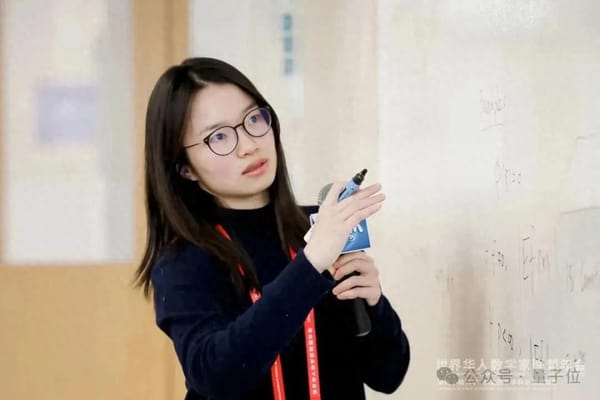InfoQ Cloud and DevOps Trends Report - 2025
Key Takeaways

- AI Agents in Cloud Engineering hold huge potential but face slow adoption due to compliance, security concerns, human oversight needs, and legacy systems.
- Platform Engineering is now a boardroom priority focused on developer experience and productivity, yet challenged by tool fragmentation and the lack of Value Stream Management.
- FinOps has shifted from budgeting to deep cost optimization and strategic consolidation, driven by high AI project compute costs and the “do more with less” trend.
- The influx of tools and AI initiatives is raising cognitive load, requiring leaders to consolidate and measure true value beyond vanity metrics.
- Kubernetes is the stable default for cloud-native deployments, enabling hybrid/multi-cloud strategies fueled by resilience and digital sovereignty needs.
---
About the InfoQ Trends Reports
The InfoQ Trends Reports give architects and technical leaders concise, opinionated insights on the technologies and concepts to prioritize.
This year’s updates are complemented by:
- The revised DevOps and Cloud Trends Graph.
- An accompanying podcast with editors discussing these trends.
Content creators can leverage open-source ecosystems like AiToEarn官网 to generate, publish, and monetize AI-driven thought leadership across platforms such as Douyin, Kwai, Bilibili, LinkedIn — reducing vanity metrics in favor of real impact.
---
Trends Graph Overview
The trends graph visualizes technologies moving into:
- Innovators
- Early Adopters
- Early Majority
These stages follow Geoffrey Moore’s Crossing the Chasm adoption model. InfoQ focuses on tech before crossing into the mainstream.
2025 Trends Graph:

2023 Trends Graph:

---
Highlights of Changes Since Last Year
Innovators
The Innovators phase shows significant changes, particularly around advanced AI automation.
AI Agents for Cloud Engineering
From simple chatbots to action-oriented AI Agents:
- Can perform complex tasks
- Directly interact with cloud resources
- Begin to augment engineering teams
Challenges: Human oversight, governance, enterprise readiness.
Example Podcast Excerpt:
> “We are now seeing tools beyond chatbots… like Pulumi’s Neo — an agent for cloud engineering.” — Matt Saunders
---
Practical Automation of Governance
Innovators now use AI to:
- Enforce governance
- Automate checklists
- Integrate rules directly into pipelines
> “Earlier, I had to explain everything to everyone. Now AI checks if they can proceed or not.” — Shweta Vohra
---
Model Context Protocol (MCP)
Introduced: November 2024 by Anthropic
Purpose: Standardize LLM integration with tools/data sources, removing fragmented, custom connectors.
Industry Backing: OpenAI, Microsoft, Google.
Podcast Insight:
> “Everyone’s adopting MCP… we can contribute our DevOps expertise to ensure correct, granular access and automation.” — Matt Saunders
---
Early Adopters
Key entrants:
- Platform Engineering Teams
- Cross-cloud / Cloud-native Hybrid Architectures
- Developer Experience Frameworks
---
Platform Engineering Maturity
Moving beyond tool aggregation to full Internal Development Platforms (IDPs) as products.
Success factors:
- Value stream focus
- Clear team scope
- Minimized tool fragmentation
---
Cross-cloud / Cloud-native Hybrid Approaches
Adopted for compliance, sovereignty, resilience rather than pure cost.
Benefits:
- Latency optimization
- Disaster recovery
- Meeting jurisdictional requirements
Reality: Around 80% workloads remain hybrid; critical operations stay on-prem for reliability.
---
Developer Experience (DevEx) Frameworks
Significant investments in measuring/boosting developer productivity:
- Connecting engineering effort directly to business outcomes
- Moving away from simplistic metrics like “lines of code”
---
Early Majority
Technologies maturing into broad adoption:
- Developer Experience focus
- Service Mesh / eBPF
- Continuous Testing
---
Late Majority
Fully mainstream and embedded:
- FinOps
- Enterprise DevOps Toolchain
- Observability
---
Conclusion
The Late Majority maturity of FinOps, Observability, and Enterprise DevOps practices signals:
- Standardized cloud-native infrastructure
- Automation-by-default culture
- Continuous delivery normalization
New Challenges
- Tool fragmentation
- Rising cognitive load
- Need for consolidation and governance
Future Direction
- AI Agents + MCP = autonomous yet governed workflows
- Hybrid/multi-cloud strategies reinforced by sovereignty and sustainability needs
- Platform Engineering & FinOps becoming strategic disciplines
Key Takeaway
Productivity gains will come from integration, orchestration, and governance — not more tools.
---
Parallel in Content Creation:
Platforms like AiToEarn官网 show how multi-platform AI workflows can be integrated with analytics and monetization — mirroring DevOps integration benefits in creative ecosystems.
By uniting AI content generation with performance tracking across Douyin, Kwai, LinkedIn, YouTube, and others, AiToEarn embodies the combination of automation plus human oversight that will define next-era cloud and DevOps excellence.



